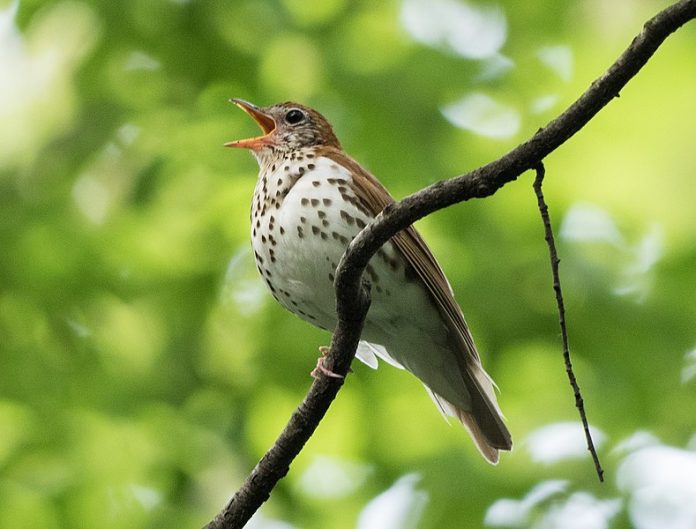Wood Thrush Call has been observed to have one of the most heart-touching songs among North American birds. The great American naturalist Henry David Thoreau wrote:
“Whenever a man hears it he is young, and Nature is in her spring; wherever he hears it, it is a new world and a free country, and the gates of Heaven are not shut against him”.
The female wood thrush call is not known. However, the male wood thrush song is amazingly unique and consists of three parts.
-
The first sub-song component is often inaudible unless the listener is close, and consists of 2 to 6 short, low-pitched notes such as bup, bup, bup, bup.
-
However, the middle part of the wood thrush sound is a loud phrase often written eee-oh-lay.
-
Wood Thrush’s third part is a ventriloquial, trill-like phrase of non-harmonic pairs of notes given rapidly and simultaneously.
The sound of a wood thrush male is to sing two notes at once, which gives its call an ethereal, flute-like quality. Every individual thrush has its own repertoire based on combinations of variations of the three parts.

Songs of Wood thrush are often repeated in order. The bup, bup, bup, bup phrase is also sometimes used as a sound, which is louder and at a greater frequency when the bird is agitated. Moreover, Wood thrush call is also comprised of a tut, tut to signal agitation. The nocturnal flight call is an emphatic buzzing heeh.
Read More: The Tree and House Sparrow
Some observations show that the male bird can influence the choice of a nest-site, but that the choice is actually made by the female-the nest-builder. The male, by means of calls or song, sometimes brings potential sites to his mates’ attention, and he may even initiate building. However, the female bird may or may not adopt sites as indicated, and so it seems that she must be regarded as the true site-selector.
Some male Wood thrush singing just before the flights began; the song was sometimes resumed afterward. The flights were seen oftenest in the early morning, but also in the evening and once around noon. The male wood thrush sings on the ground eight times while foraging. Most often in April, May, June, and July.








